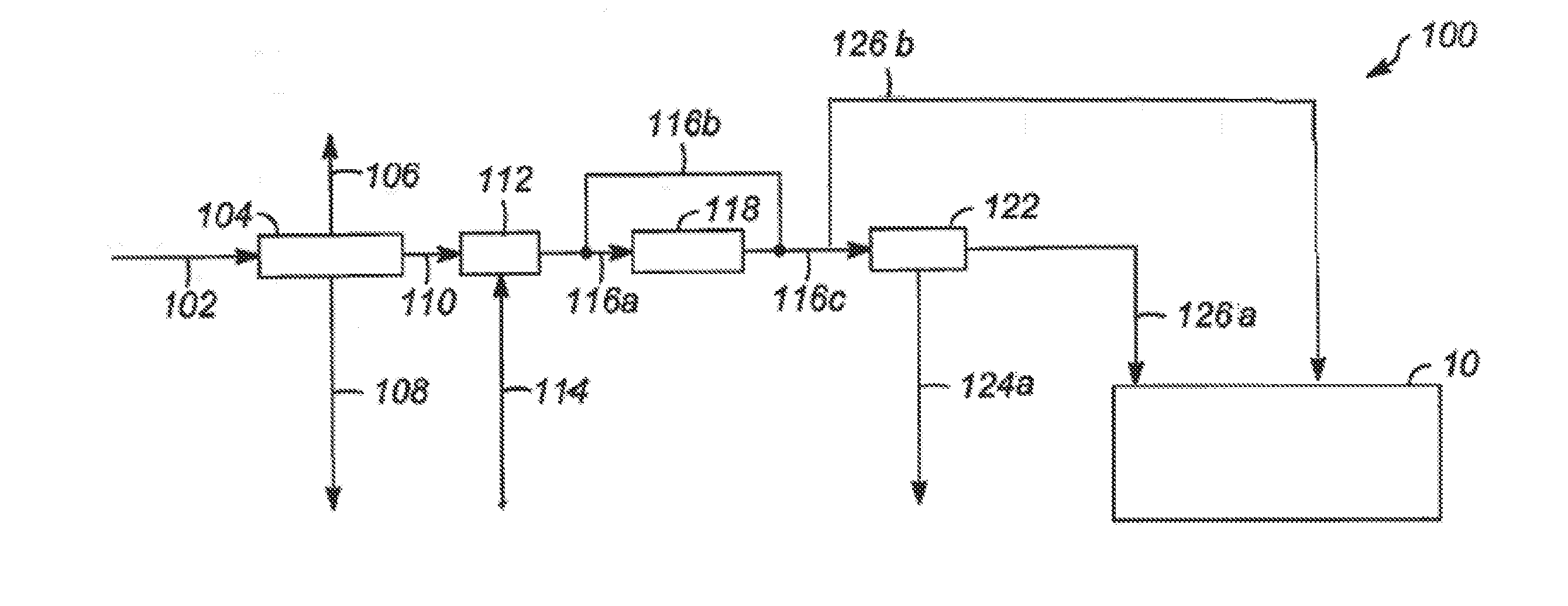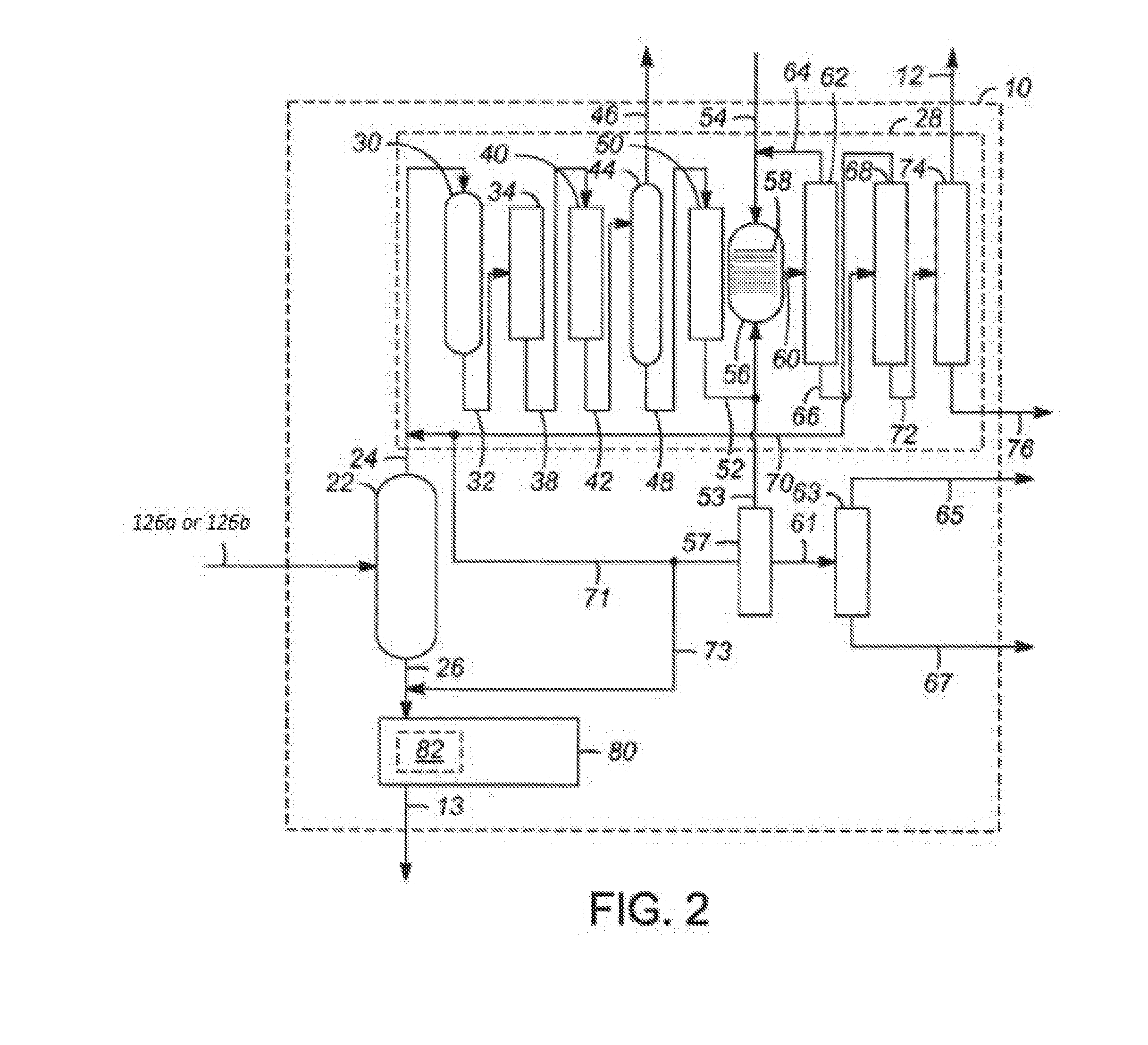Methods for producing alkylbenzenes, paraffins, olefins and oxo alcohols from waste plastic feedstocks
a technology of waste plastic feedstocks and oxo alcohols, which is applied in the direction of hydrocarbon oil treatment products, ether/acetal/ketal group formation/introduction, hydrocarbon by dehydrogenation, etc., can solve the problems that waste plastic feedstocks, however, have not been identified as viable for conversion into surfactant intermediates and surfactants
- Summary
- Abstract
- Description
- Claims
- Application Information
AI Technical Summary
Benefits of technology
Problems solved by technology
Method used
Image
Examples
example 1
Heavy Duty Liquid Laundry Detergent Compositions
[0226]
LiquidLiquidLiquidLiquidDetergentDetergentDetergentDetergentABCDIngredient(wt %)(wt %)(wt %)(wt %)Plastic waste-derived or1-120 1-12 1-121-12conventional kerosene-basedAES10Plastic waste-derived or5-2015-301-5 10-201-5 conventional kerosene-basedLAS11Sodium formate2.662.662.662.660.11Calcium formate———— 0.097Sodium hydroxide0.210.210.210.210.68Monoethanolamine (MEA)1.651.651.651.652.80Diethylene glycol (DEG)4.104.104.104.101.23Propylene glycol————8.39Plastic waste-derived or0.400.400.400.40—conventional kerosene-basedAE92C16AE73.153.153.153.15—NI 24-98————0.97Chelant30.180.180.180.180.29Citric Acid1.701.701.701.702.83C12-18 Fatty Acid1.471.471.471.471.09Borax1.191.191.191.192.00Ethanol1.441.441.441.441.47Ethoxylated1.351.351.351.351.85Polyethyleneimine 1Amphiphilic alkoxylated———— 0.940grease cleaning polymer7A compound having the0.400.400.400.401.40following general structure:bis((C2H5O)(C2H4O)n)(CH3)—N+—CxH2x—N+—(CH3)—bis((C2H...
example 2
Unit Dose Compositions—Unit Dose Laundry Detergent Formulations can Comprise One or Multiple Compartments
[0227]
Ingredient(wt %)(wt %)(wt %)wt %)(wt %)Ethoxylated glycerine40340(EO1-24)1,2 propanediol718.813.813.815.8Glycerine403.12.14.1Di Propylene Glycol40000Sodium cumene00002.0sulphonatePlastic waste-derived or8189.512.510conventionalkerosene -based AESPlastic waste-derived or5189.514.57.5conventional kerosene-based LASPlastic waste-derived or1505010conventional kerosene-based Isalchem ®156ASPlastic waste-derived or13316213conventional kerosene-based AECitric Acid10.60.61.560.6C12-18 Fatty Acid4.5104.514.84.5Enzymes1.01.71.72.01.7Ethoxylated1.41.44.06.04.0PolyethylenimineChelant0.60.61.21.23.0PEG-PVAc Polymer42.542.51.5Fluorescent Brightener0.150.40.30.30.3Monoethanolamine9.88.08.08.09.8TIPA002.000Triethanolamine02.0000Cyclohexyl dimethanol0002.00Water1210101010Structurant0.10.140.140.10.14Perfume0.21.911.91.9Hueing Agent00.10.0010.00010BuffersTo pH 8.0Other Solvents (ethanol)To 1...
examples 2
Raw Materials for Examples 2
[0228]AES is C12-14 alkyl ethoxy (3) sulfate, C14-15 alkyl ethoxy (2.5) sulfate, or C12-15 alkyl ethoxy (1.8) sulfate made according the methods disclosed herein or via a conventional kerosene-based process.
Isalchem 156AS is an alcohol sulfate derived from the non-selective cobalt hydroformylation of an oxo alcohol, made according to the methods disclosed herein or via a conventional kerosene-based process.
AE is selected from C12-13 with an average degree of ethoxylation of 6.5, C11-16 with an average degree of ethoxylation of 7, C12-14 with an average degree of ethoxylation of 7, C14-15 with an average degree of ethoxylation of 7, or C12-14 with an average degree of ethoxylation of 9, all made according the methods disclosed herein or via a conventional kerosene-based process.
PEG-PVAc polymer is a polyvinyl acetate grafted polyethylene oxide copolymer having a polyethylene oxide backbone and multiple polyvinyl acetate side chains. The molecular weight of...
PUM
| Property | Measurement | Unit |
|---|---|---|
| Temperature | aaaaa | aaaaa |
| Temperature | aaaaa | aaaaa |
| Volume | aaaaa | aaaaa |
Abstract
Description
Claims
Application Information
 Login to View More
Login to View More - R&D
- Intellectual Property
- Life Sciences
- Materials
- Tech Scout
- Unparalleled Data Quality
- Higher Quality Content
- 60% Fewer Hallucinations
Browse by: Latest US Patents, China's latest patents, Technical Efficacy Thesaurus, Application Domain, Technology Topic, Popular Technical Reports.
© 2025 PatSnap. All rights reserved.Legal|Privacy policy|Modern Slavery Act Transparency Statement|Sitemap|About US| Contact US: help@patsnap.com



